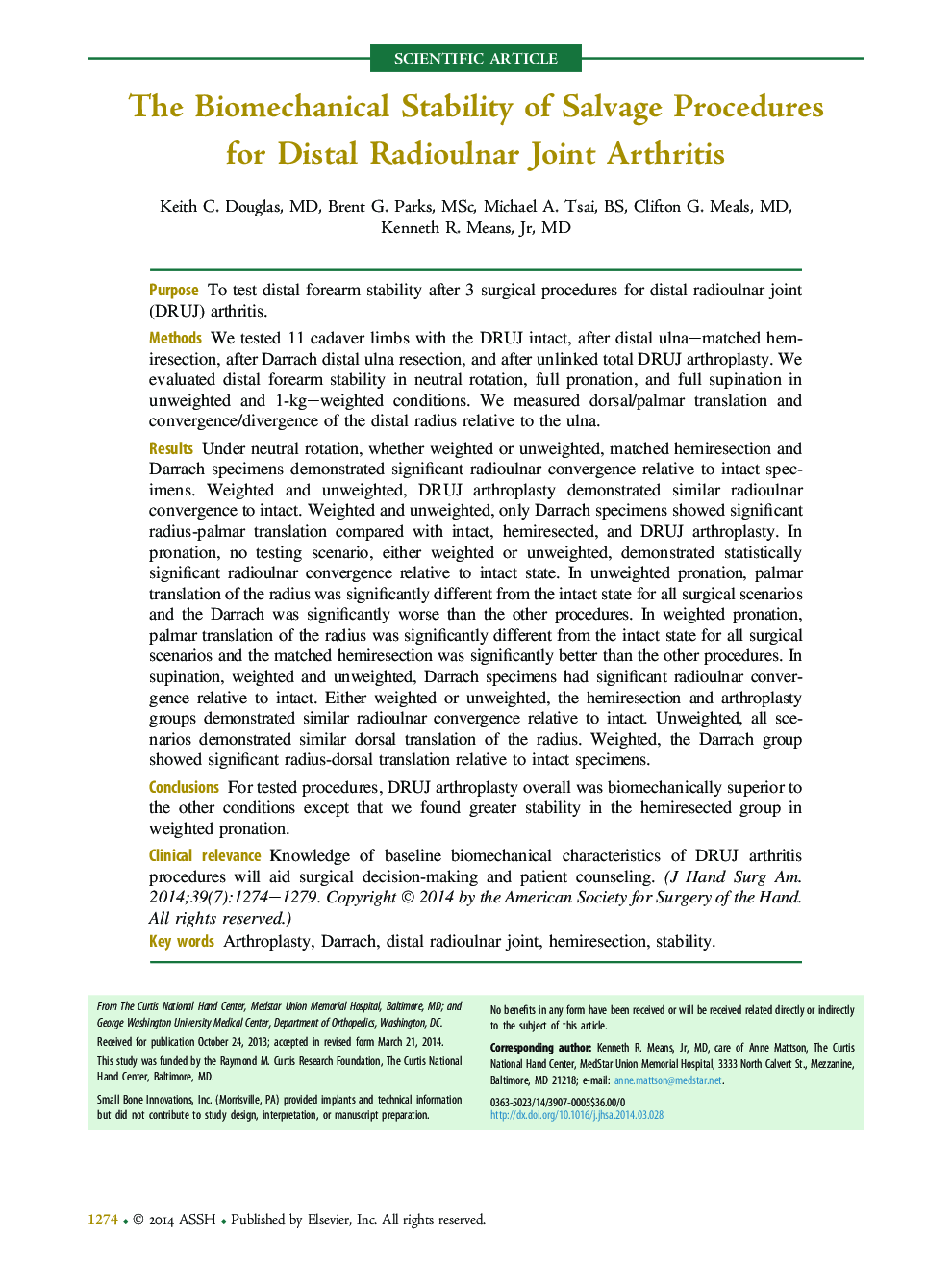| کد مقاله | کد نشریه | سال انتشار | مقاله انگلیسی | نسخه تمام متن |
|---|---|---|---|---|
| 4067805 | 1604368 | 2014 | 6 صفحه PDF | دانلود رایگان |
PurposeTo test distal forearm stability after 3 surgical procedures for distal radioulnar joint (DRUJ) arthritis.MethodsWe tested 11 cadaver limbs with the DRUJ intact, after distal ulna–matched hemiresection, after Darrach distal ulna resection, and after unlinked total DRUJ arthroplasty. We evaluated distal forearm stability in neutral rotation, full pronation, and full supination in unweighted and 1-kg–weighted conditions. We measured dorsal/palmar translation and convergence/divergence of the distal radius relative to the ulna.ResultsUnder neutral rotation, whether weighted or unweighted, matched hemiresection and Darrach specimens demonstrated significant radioulnar convergence relative to intact specimens. Weighted and unweighted, DRUJ arthroplasty demonstrated similar radioulnar convergence to intact. Weighted and unweighted, only Darrach specimens showed significant radius-palmar translation compared with intact, hemiresected, and DRUJ arthroplasty. In pronation, no testing scenario, either weighted or unweighted, demonstrated statistically significant radioulnar convergence relative to intact state. In unweighted pronation, palmar translation of the radius was significantly different from the intact state for all surgical scenarios and the Darrach was significantly worse than the other procedures. In weighted pronation, palmar translation of the radius was significantly different from the intact state for all surgical scenarios and the matched hemiresection was significantly better than the other procedures. In supination, weighted and unweighted, Darrach specimens had significant radioulnar convergence relative to intact. Either weighted or unweighted, the hemiresection and arthroplasty groups demonstrated similar radioulnar convergence relative to intact. Unweighted, all scenarios demonstrated similar dorsal translation of the radius. Weighted, the Darrach group showed significant radius-dorsal translation relative to intact specimens.ConclusionsFor tested procedures, DRUJ arthroplasty overall was biomechanically superior to the other conditions except that we found greater stability in the hemiresected group in weighted pronation.Clinical relevanceKnowledge of baseline biomechanical characteristics of DRUJ arthritis procedures will aid surgical decision-making and patient counseling.
Journal: The Journal of Hand Surgery - Volume 39, Issue 7, July 2014, Pages 1274–1279
